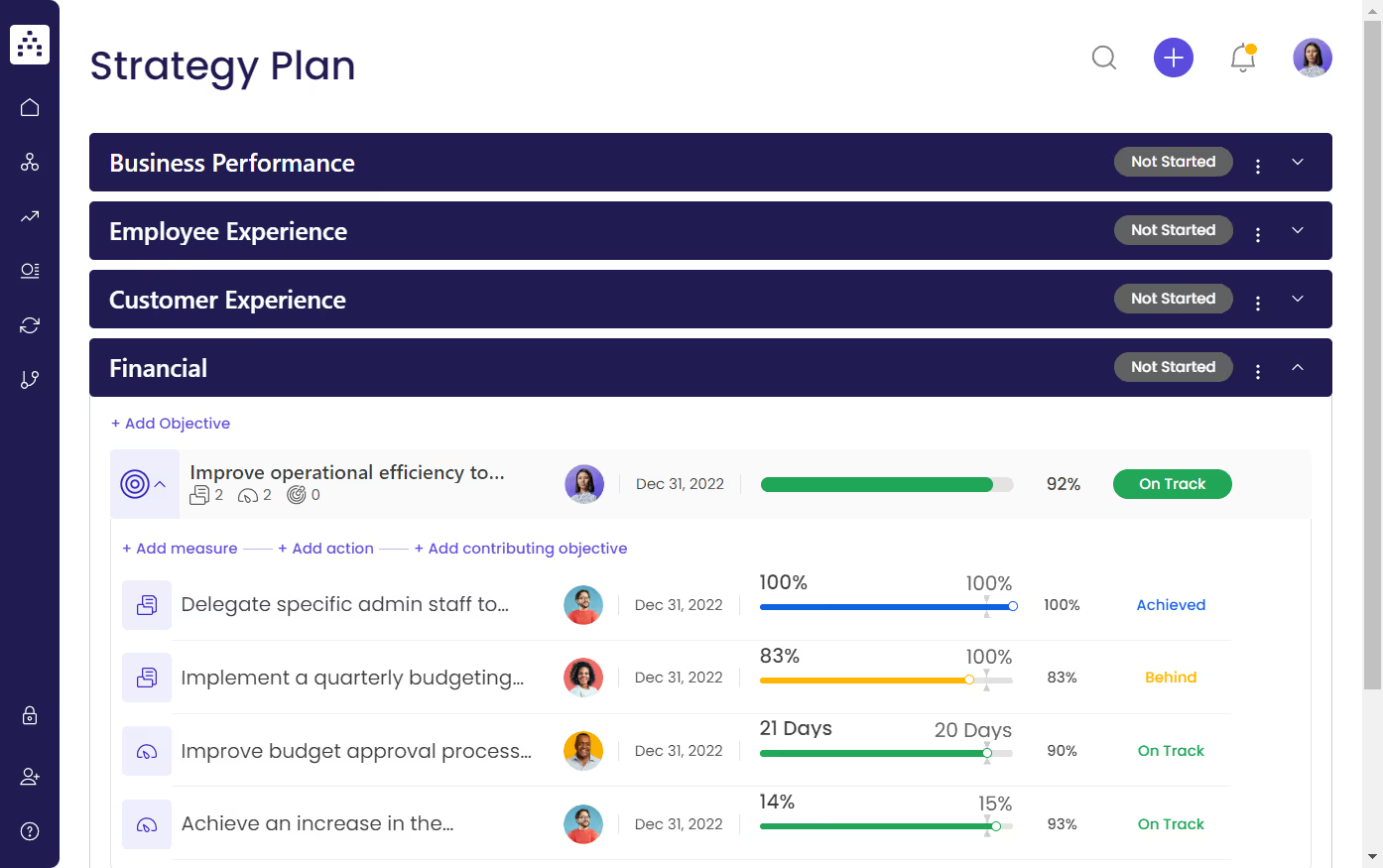What is a Strategic Plan?
A strategic plan is the process of initiating the direction a business wants to take and defining how the plan will cascade through the organization by the allocation of resources.
Strategy is a set of choices. A set that comes from trying to make sense of that messy reality, figuring out where your organization fits in it and how you can make that the new reality.
What's included in this Strategic Planning template?
Check out this short video to see your Strategic Planning Template in action and how to make the most out of it:
👉🏻 In this template you'll find the core elements of your plan to quickly adapt to your needs:
- 4x Focus Areas
- 14x Objectives
- 20x Projects
- 22x KPIs
Want to learn how to use this template in 2 minutes? Check our interactive tour:
Who is this Strategic Planning template for?
This template is function agnostic, meaning it can be used by multiple teams in all levels of the organization. It is also industry agnostic and suited for companies of all sizes.
How is this Strategic Planning relevant to your organization?
Strategies need structure to succeed and make sure the organization is moving in the right direction and hitting the goals it set out to achieve. The Strategic Planning template provide that structure for the process of creating a strategic plan.
1. Define clear examples of your focus areas
Focus areas are broad categories used to group problems or challenging areas within your organization. Creating focus areas helps guide your organization on what areas are a priority to work towards. If you’re struggling for inspiration try to think of the categories within your organization that you want to focus on and start creating strategic focus areas from there.
Examples of strategic focus areas that could fall under a strategic plan could be: Aggressive Growth, Top Places to Work, Portfolio Expansion, and Value Creation (just to name a few).
2. Think about the objectives that could fall under that focus area
How could you best encapsulate this focus area? What goals could you set and act upon to achieve a positive result in this focus area? These are the sorts of questions you want to answer when thinking about setting up objectives. A strategic objective usually has to be specific and measurable to cause enough impact and effectively explain what you want to achieve.
Examples of some objectives for the focus area of Value Creation could be Communicate value to distinguish oneself from competitors and secure long term customer relationships, and Deliver quality work within a defined time.
3. Set measurable targets (KPIs) to tackle the objective
KPIs are important metrics that make sure that you can accomplish your business objectives. KPIs not only take into account numerical measurements to help track your progress but also enable you to review the performance of your goals so you can accordingly make adjustments in your execution to achieve your strategic goals.
An example of a KPI for the objective Deliver quality work within a defined time could be Reduce Project management costs of the project's total TIC.
4. Implement related projects to achieve the KPIs
Projects can help you and your team understand how to adapt, improve, learn from, and better implement processes that can help you achieve your end strategic objectives.
An example of a project to enhance Value Creation within your organization could be: Integrate fortnightly meetings into the company schedule to communicate results, achievements and provide insight for growth and improvement.
5. Utilize Cascade Strategy Execution Platform to see faster results from your strategy
Make sure your strategy is front and center with Cascade. You can plan, execute, measure and adapt your strategy in one easy-to-use platform and make sure your strategic plan is connected to on-the-ground execution.
Get inspired by this Strategic Planning template and launch your strategy in Cascade; it’s $0 forever.


